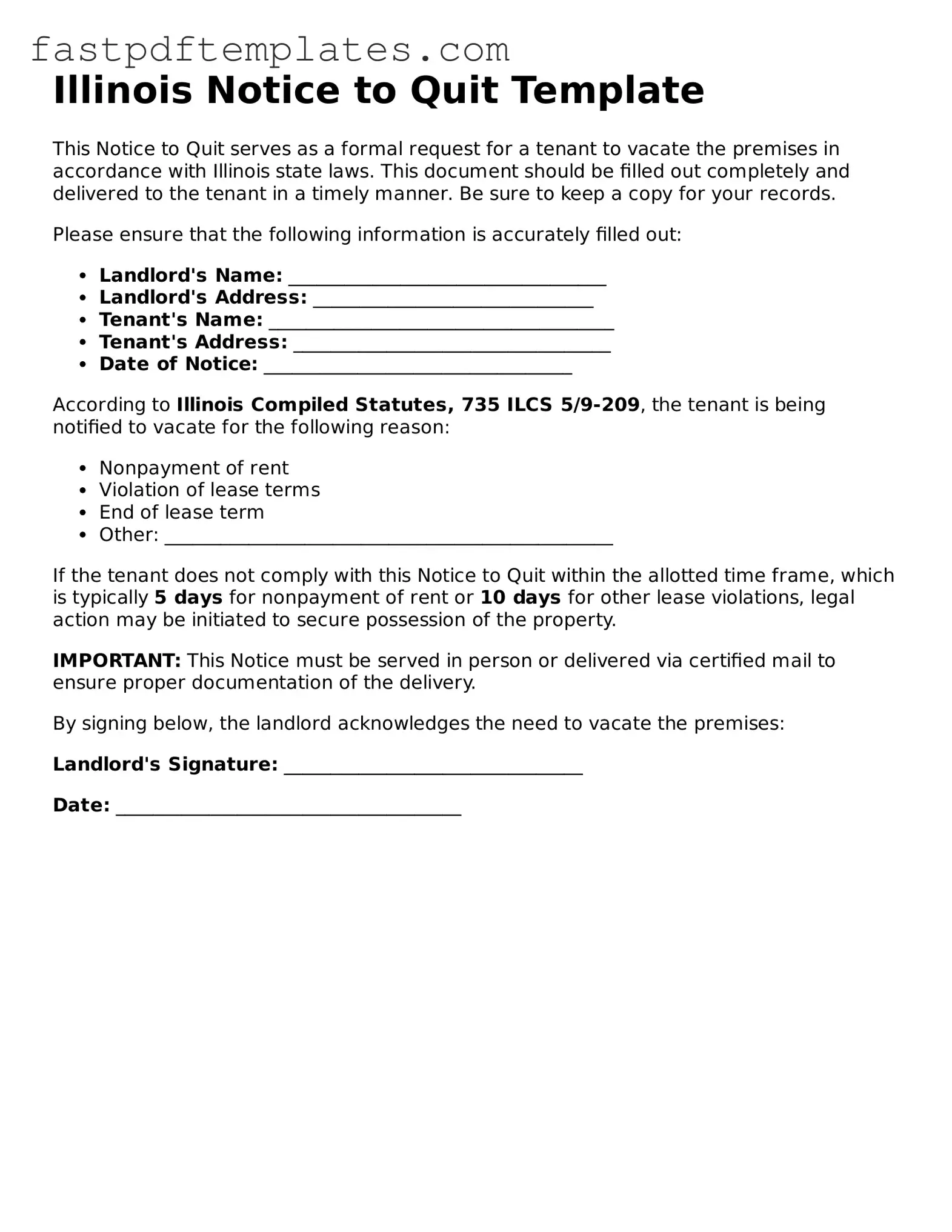Illinois Notice to Quit Template
This Notice to Quit serves as a formal request for a tenant to vacate the premises in accordance with Illinois state laws. This document should be filled out completely and delivered to the tenant in a timely manner. Be sure to keep a copy for your records.
Please ensure that the following information is accurately filled out:
- Landlord's Name: __________________________________
- Landlord's Address: ______________________________
- Tenant's Name: _____________________________________
- Tenant's Address: __________________________________
- Date of Notice: _________________________________
According to Illinois Compiled Statutes, 735 ILCS 5/9-209, the tenant is being notified to vacate for the following reason:
- Nonpayment of rent
- Violation of lease terms
- End of lease term
- Other: ________________________________________________
If the tenant does not comply with this Notice to Quit within the allotted time frame, which is typically 5 days for nonpayment of rent or 10 days for other lease violations, legal action may be initiated to secure possession of the property.
IMPORTANT: This Notice must be served in person or delivered via certified mail to ensure proper documentation of the delivery.
By signing below, the landlord acknowledges the need to vacate the premises:
Landlord's Signature: ________________________________
Date: _____________________________________
